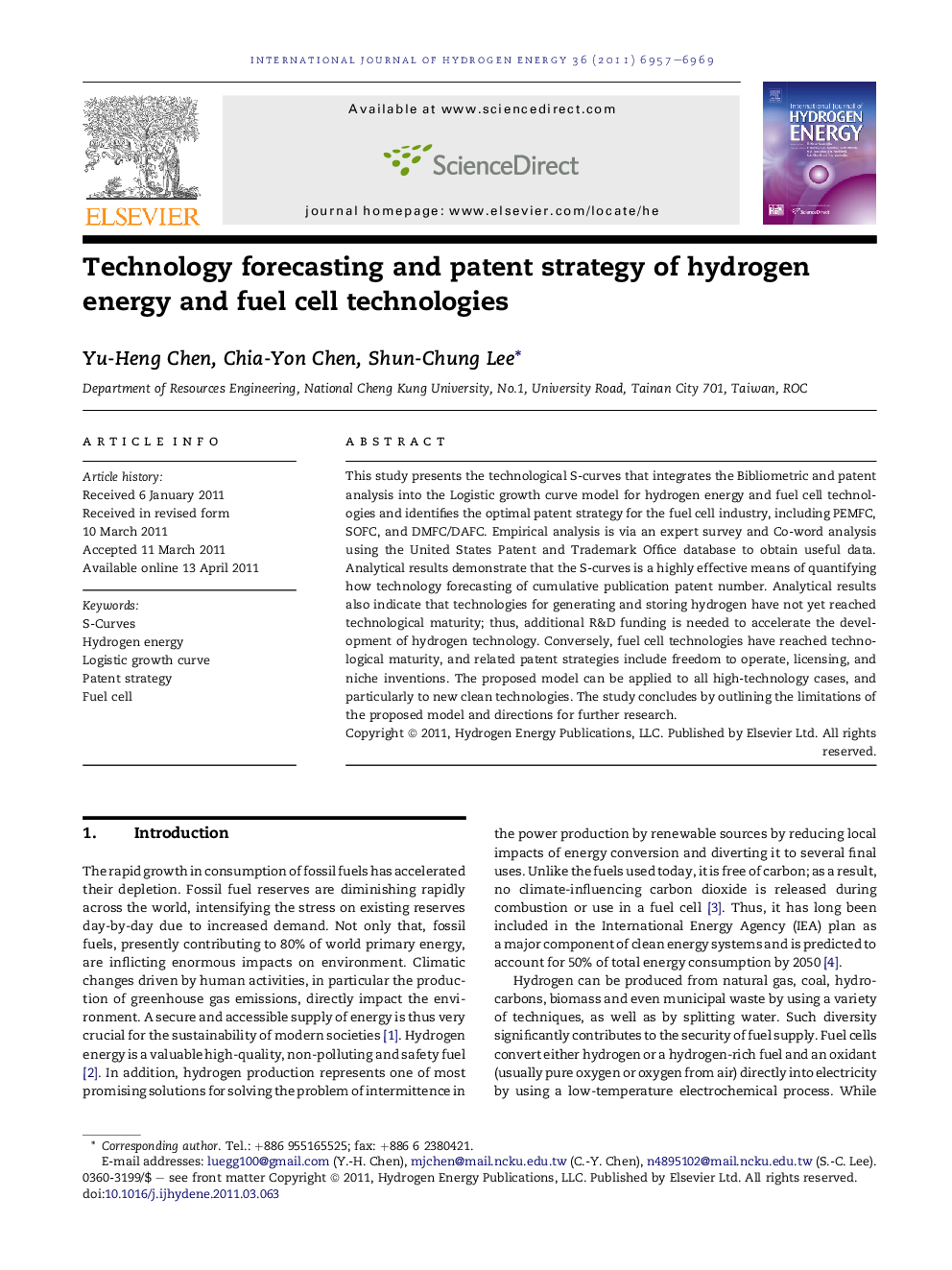| Article ID | Journal | Published Year | Pages | File Type |
|---|---|---|---|---|
| 1272083 | International Journal of Hydrogen Energy | 2011 | 13 Pages |
This study presents the technological S-curves that integrates the Bibliometric and patent analysis into the Logistic growth curve model for hydrogen energy and fuel cell technologies and identifies the optimal patent strategy for the fuel cell industry, including PEMFC, SOFC, and DMFC/DAFC. Empirical analysis is via an expert survey and Co-word analysis using the United States Patent and Trademark Office database to obtain useful data. Analytical results demonstrate that the S-curves is a highly effective means of quantifying how technology forecasting of cumulative publication patent number. Analytical results also indicate that technologies for generating and storing hydrogen have not yet reached technological maturity; thus, additional R&D funding is needed to accelerate the development of hydrogen technology. Conversely, fuel cell technologies have reached technological maturity, and related patent strategies include freedom to operate, licensing, and niche inventions. The proposed model can be applied to all high-technology cases, and particularly to new clean technologies. The study concludes by outlining the limitations of the proposed model and directions for further research.
► This study presents the technological S-curves for hydrogen energy and fuel cell technologies. ► This study also identifies the optimal patent strategy for the fuel cell industry. ► The technologies for generating and storing hydrogen have not yet reached technological maturity. ► Fuel cell technologies have reached technological maturity. ► The patent strategies for Fuel cell include freedom to operate, licensing, and niche inventions.
